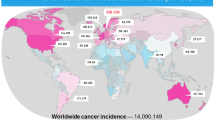Abstract
Purpose
The authors analysed the impact of nonmedical costs (travel, loss of productivity) in an economic analysis of PET–CT (positron-emission tomography–computed tomography) performed with standard contrast-enhanced CT protocols (CECT).
Materials and methods
From October to November 2009, a total of 100 patients referred to our institute were administered a questionnaire to evaluate the nonmedical costs of PET–CT. In addition, the medical costs (equipment maintenance and depreciation, consumables and staff) related to PET–CT performed with CECT and PET–CT with low-dose nonenhanced CT and separate CECT were also estimated.
Results
The medical costs were 919.3 euro for PET–CT with separate CECT, and 801.3 euro for PET–CT with CECT. Therefore, savings of approximately 13 % are possible. Moreover, savings in nonmedical costs can be achieved by reducing the number of hospital visits required by patients undergoing diagnostic imaging.
Conclusions
Nonmedical costs heavily affect patients’ finances as well as having an indirect impact on national health expenditure. Our results show that PET–CT performed with standard dose CECT in a single session provides benefits in terms of both medical and nonmedical costs.
Similar content being viewed by others
References
Coleman RE, Delbeke D, Guiberteau MJ et al (2005) Concurrent PET/CT with an integrated imaging system: intersociety dialogue from the joint working group of the American College of Radiology, the Society of Nuclear Medicine, and the Society of Computed Body Tomography and Magnetic Resonance. J Nucl Med 46:1225–1239
Czernin J, Schelbert HR (2007) PET/CT in cancer patient management. Introduction. J Nucl Med 48(Suppl 1):2S–3S
Townsend DW, Carney JP, Yap JT et al (2004) PET/CT today and tomorrow. J Nucl Med 45(Suppl 1):4S–14S
Bar-Shalom R, Yefremov N, Guralnik L et al (2003) Clinical performance of PET/CT in evaluation of cancer: additional value for diagnostic imaging and patient management. J Nucl Med 44:1200–1209
Lardinois D, Weder W, Hany TF et al (2003) Staging of non-small-cell lung cancer with integrated positron-emission tomography and computed tomography. N Engl J Med 348:2500–2507
Saif MW, Tzannou I, Makrilia N et al (2010) Role and cost effectiveness of PET/CT in management of patients with cancer. Yale J Biol Med 83:53–65
Juweid ME, Cheson BD (2006) Positron-emission tomography and assessment of cancer therapy. N Engl J Med 354:496–507
Juweid ME, Stroobants S, Hoekstra OS et al (2007) Use of positron emission tomography for response assessment of lymphoma: consensus of the Imaging Subcommittee of International Harmonization Project in Lymphoma. J Clin Oncol 25:571–578
Seam P, Juweid ME, Cheson BD (2007) The role of FDG-PET scans in patients with lymphoma. Blood 110:3507–3516
Kanzaki R, Higashiyama M, Maeda J et al (2010) Clinical value of F18-fluorodeoxyglucose positron emission tomography–computed tomography in patients with non-small cell lung cancer after potentially curative surgery: experience with 241 patients. Interact Cardiovasc Thorac Surg 10:1009–1014
Keidar Z, Haim N, Guralnik L et al (2004) PET/CT using 18F-FDG in suspected lung cancer recurrence: diagnostic value and impact on patient management. J Nucl Med 45:1640–1646
Chung HH, Jo H, Kang WJ et al (2007) Clinical impact of integrated PET/CT on the management of suspected cervical cancer recurrence. Gynecol Oncol 104:529–534
Heusner T, Golitz P, Hamami M et al (2011) “One-stop-shop” staging: should we prefer FDG-PET/CT or MRI for the detection of bone metastases? Eur J Radiol 78:430–435
Bibbolino C, Accarino B, Benea G et al (2012) Modello di appropriatezza prestazionale quali-quantitativa in Diagnostica per Immagini. Società Italiana di Radiologia Medica
Pfannenberg AC, Aschoff P, Brechtel K et al (2007) Value of contrast-enhanced multiphase CT in combined PET/CT protocols for oncological imaging. Br J Radiol 80:437–445
Pfannenberg AC, Aschoff P, Brechtel K et al (2007) Low dose non-enhanced CT versus standard dose contrast-enhanced CT in combined PET/CT protocols for staging and therapy planning in non-small cell lung cancer. Eur J Nucl Med Mol Imaging 34:36–44
Soyka JD, Veit-Haibach P, Strobel K et al (2008) Staging pathways in recurrent colorectal carcinoma: is contrast-enhanced 18F-FDG PET/CT the diagnostic tool of choice? J Nucl Med 49:354–361
Orlacchio A, Schillaci O, Gaspari E et al (2012) Role of [18F]-FDG-PET/MDCT in evaluating early response in patients with Hodgkin’s lymphoma. Radiol Med 117:1250–1263
Brenner DJ, Elliston CD (2004) Estimated radiation risks potentially associated with full-body CT screening. Radiology 232:735–738
Willowson KP, Bailey EA, Bailey DL (2012) A retrospective evaluation of radiation dose associated with low dose FDG protocols in whole-body PET/CT. Australas Phys Eng Sci Med 35:49–53
Schulman KA and Yabroff KR (1995) Measuring the cost-effectiveness of cancer care. Oncology (Williston Park) 9:523–530, 533; discussion 533–538
Alsarraf R, Jung CJ, Perkins J et al (1999) Measuring the indirect and direct costs of acute otitis media. Arch Otolaryngol Head Neck Surg 125:12–18
Fazio F, Trovò M, Saita M et al (2005) Valutazione economica di trattamenti radioterapici effettuati con ipofrazionamento di dose. http://www.iss.it/binary/impa/cont/alleg2801053RelIpofrazionamento
Yankeelov TE, Peterson TE, Abramson RG et al (2012) Simultaneous PET-MRI in oncology: a solution looking for a problem? Magn Reson Imaging 30:1342–1356
Conflict of interest
Antonio Orlacchio, Anna Micaela Ciarrapico, Orazio Schillaci, Fabrizio Chegai, Daniela Tosti, Fabrizio D’Alba, Manlio Guazzaroni, Giovanni Simonetti declare no conflict of interest
Author information
Authors and Affiliations
Corresponding author
Rights and permissions
About this article
Cite this article
Orlacchio, A., Ciarrapico, A.M., Schillaci, O. et al. PET–CT in oncological patients: analysis of informal care costs in cost–benefit assessment. Radiol med 119, 283–289 (2014). https://doi.org/10.1007/s11547-013-0340-5
Received:
Accepted:
Published:
Issue Date:
DOI: https://doi.org/10.1007/s11547-013-0340-5




